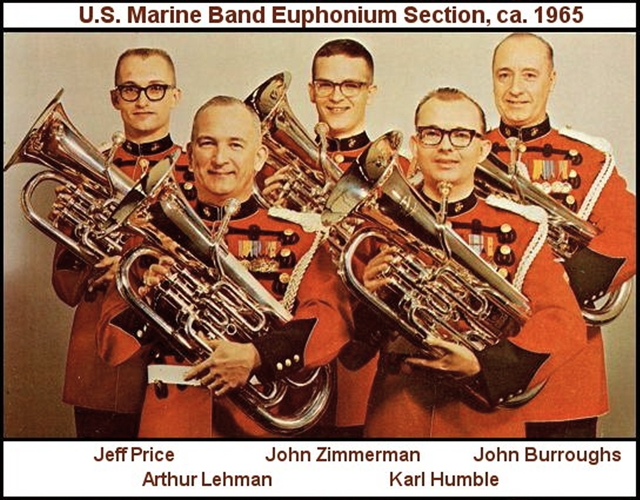Tel: +1 469 836 2108 | Email : drobnakbrass@gmail.com | Login
Arthur "Art" Lehman (1917-2009)
Euphonium Soloist with The United States Marine Band "The President's Own"
Arthur W. 'Art' Lehman (September 24, 1917–June 19, 2009) was a widely recorded American Euphonium virtuoso and soloist. He was noted for having radically changed the way the instrument was technically performed, and was a major influence on Euphonium soloists who followed him.
Lehman retired as Euphonium soloist and section leader of the "President's Own" United States Marine Band in 1971 after twenty-four years of service. During his time with the Marine Band, he performed many solos that set the highest standards for Euphoniumists who followed. Arthur Lehman was instrumental in changing the Euphonium section of the Marine Band from playing the small-bore C.G. Conn Double-bell euphoniums of the Sousa Band era to the large-bore Boosey and Hawkes self-compensating Euphoniums, which he demonstrated to be more functional and adaptable to modern performance practices.
Art Lehman was born in Doylestown, Pennsylvania, and attended Penn State University, where he was awarded a B.A. in Electrical Engineering in 1940.
Drafted into the United States Army upon graduation, although initially assigned to an aircraft factory based on his engineering background, Lehman wound up playing Euphonium with an Army band from 1944 to 1946.
Having studied with Simone Mantia, soloist of the Sousa Band, in the summer of 1946, Lehman began studying Euphonium with Harold Brasch, the noted Euphonium soloist of the United States Navy Band. Lehman played with the Penn State Varsity Band and the Philco Band of Philadelphia during his studies.
Arthur Lehman was accepted into the United States Marine Band in 1947. Retiring with rank of Master Gunnery Sergeant, Lehman also served as the Band's personnel manager from 1956 to 1964.
Lehman's Euphonium teacher, Harold Brasch had started using a bigger-bore Boosey and Hawkes Euphonium during World War II, but the bigger-sounding British-made Euphoniums didn't catch on with other American players until the middle 1950s with Lehman's solo performances during Marine Band radio concerts.
In the late 1940s, Lehman worked closely with the British Boosey and Hawkes musical instrument company to produce a set of five custom-made silver- plated "Imperial" model Euphoniums which were used in the Marine Band for over half a century. One of these unique Euphoniums is owned today by one of Lehman's former students, Glenn Call.
Always looking for a darker, more powerful sound, Arthur Lehman also developed the deep, large-bore parabolic-cup mouthpieces generally known today as the "Lehman Special," a radical change from the shallower cup- shaped mouthpieces of earlier Euphonium soloists. With his performances on the Boosey and Hawkes Euphoniums and his "Lehman Special" mouthpieces, Lehman is widely credited for transforming the typical American Euphonium sound from the lighter continental sound of the John Philip Sousa days to the rich, dark and resonant sound common today.
In 1969, Glenn Call, then Euphoniumist with the Continental Army Band at Fort Monroe, Virginia, began studies with Arthur Lehman. It was at this time that Lehman began to meticulously formulate his Euphonium playing techniques and put them down in a document that came to be called "The ART of the Euphonium." These notes developed into a book published in the early 1970s by Robert Hoe, and later by the Tuba Press.
Call continued his lessons with Arthur Lehman through the 1970s after Call was accepted in the Marine Band. During this time, Lee Dummer, of the U.S. Army Band ("Pershing's Own") also studied with Lehman. Other enthusiastic Lehman Euphonium students included Michael Ressler, Frank Noonan, Robert Palmer, Maureen Hickey and Tony Ciarlante. Arthur Lehman's final student - and official biographer - was retired FBI Agent Keith Barton, whom Arthur gave his personal Boosey and Hawkes Euphonium.
A member of the International Tuba Euphonium Association (ITEA), Arthur Lehman was a writer on Euphonium technique and repertoire during the 1980s, through the early 2000s, appearing in professional journals and the internet. Following his years in the Marine Band, Arthur Lehman continued playing as a member of the National Concert Band of America. He retired from playing the playing the instrument in April 2002 at age 84½.
Arthur Lehman died June 19, 2009 at his home in Camp Springs, Maryland.
-International Tuba Euphonium Association
Biography
Arthur Lehman (1917 – 2009) was born in Doylestown, Pennsylvania, and attended Penn State University, where he was awarded a B.A. in Electrical Engineering in 1940. Drafted into the United States Army upon graduation, although initially assigned to an aircraft factory based on his engineering background, Lehman wound up playing Euphonium with an Army band from 1944 to 1946.
Having studied with Simone Mantia, soloist of the Sousa Band, in the summer of 1946, Lehman began studying Euphonium with Harold Brasch, the noted Euphonium soloist of the United States Navy Band. Lehman played with the Penn State Varsity Band and the Philco Band of Philadelphia during his studies.
Arthur Lehman was accepted into the United States Marine Band in 1947. Retiring with rank of Master Gunnery Sergeant, Lehman also served as the Band's personnel manager from 1956 to 1964.
Lehman's Euphonium teacher, Harold Brasch had started using a bigger-bore Boosey and Hawkes Euphonium during World War II, but the bigger-sounding British-made Euphoniums didn't catch on with other American players until the middle 1950s with Lehman's solo performances during Marine Band radio concerts.
In the late 1940s, Lehman worked closely with the British Boosey and Hawkes musical instrument company to produce a set of five custom-made silver-plated "Imperial" model Euphoniums which were used in the Marine Band for over half a century. One of these unique Euphoniums is owned today by one of Lehman's former students, Glenn Call.
Always looking for a darker, more powerful sound, Arthur Lehman also developed the deep, large-bore parabolic-cup mouthpieces generally known today as the "Lehman Special," a radical change from the shallower cup-shaped mouthpieces of earlier Euphonium soloists. With his performances on the Boosey and Hawkes Euphoniums and his "Lehman Special" mouthpieces, Lehman is widely credited for transforming the typical American Euphonium sound from the lighter continental sound of the John Philip Sousa days to the rich, dark and resonant sound common today.
In 1969, Glenn Call, then Euphoniumist with the Continental Army Band at Fort Monroe, Virginia, began studies with Arthur Lehman. It was at this time that Lehman began to meticulously formulate his Euphonium playing techniques and put them down in a document that came to be called "The ART of the Euphonium." These notes developed into a book published in the early 1970s by Robert Hoe, and later by the Tuba Press.
Call continued his lessons with Arthur Lehman through the 1970s after Call was accepted in the Marine Band. During this time, Lee Dummer, of the U.S. Army Band ("Pershing's Own") also studied with Lehman. Other enthusiastic Lehman Euphonium students included Michael Ressler, Frank Noonan, Robert Palmer, Maureen Hickey and Tony Ciarlante. Arthur Lehman's final student - and official biographer - was retired FBI Agent Keith Barton, whom Arthur gave his personal Boosey and Hawkes Euphonium.
A member of the International Tuba Euphonium Association (ITEA), Arthur Lehman was a writer on Euphonium technique and repertoire during the 1980s, through the early 2000s, appearing in professional journals and the internet. Following his years in the Marine Band, Arthur Lehman continued playing as a member of the National Concert Band of America. He retired from playing the instrument in April 2002 at age 84½. (Wikipedia)
Mr. Lehman received the Lifetime Achievement Award posthumously at the International Tuba – Euphonium Conference held at the University of Arizona in 2010
-Jerry Young
2010 ITEC Program
Arthur W. Lehman was a member of the euphonium section of “The President’s Own” United States Marine Band from 1947 until his retirement in 1971. Throughout his career he was frequently featured as a soloist with the band and in 1953 became the band’s principal euphonium. He had a profound influence on euphonium playing in the United States and abroad and set a standard of musicianship on the instrument that will inspire generations of euphonium players for years to come.
Arthur was born on September 24, 1917, in Doylestown, Pennsylvania. When he was age ten he was given a baritone horn, began taking lessons, and was soon playing in the Doylestown high school band and local community bands. After graduation from high school in 1935, he attended Penn State University (then Penn State College) in State College, Pennsylvania, and graduated in 1940 with a Bachelor of Science degree in electrical engineering.
He took a job in an aircraft factory in nearby Bristol, Pennsylvania, but was drafted into the U.S. Army in 1941. After completing basic training, he was transferred to the enlisted reserve corps and sent back to Bristol to continue work at the aircraft factory. He was recalled to active duty in 1944 and spent the next two years with the 330th Army Service Forces Band. After separation from the Army in 1946, Arthur returned to the aircraft factory.
In July 1947, Arthur successfully auditioned for the U.S. Marine Band and joined the band on August 4, 1947. His solo career with the band began the following June when he performed Herbert L. Clarke’s “The Carnival of Venice” at a concert at the U.S. Capitol building. He was one of the most frequently featured soloists of the band with a long list of solos in his repertoire. In 1954, he performed fourteen different solos throughout the year. His solo performances took place in Washington, DC, on tour throughout the continental United States, and on nationally broadcast radio programs. His solo career with the Marine Band did not end until one week before his retirement from the band on July 29, 1971, when he recorded Jean-Baptiste Arban’s “The Carnival of Venice.” He served with the band three days short of twenty-four years.
Following his retirement he became a member of the National Concert Band of America and performed with them for an additional twenty-four years. During that time he played at least twenty-six different solos in over sixty solo performances. In June 1997, Arthur announced his “final” retirement as a euphonium player, bringing to a close seventy years as an active player. He continued to give lessons to students who sought him out, and corresponded with musicians and friends from around the world. He died at his home in Camp Springs, Maryland, on June 19, 2009.
Those who knew Arthur personally know that he was a humble man who never sought fame or notoriety. He always had time to help another musician who was working to improve himself and he was a constant source of encouragement to many. He was profoundly influential on those who heard him or studied with him and is rightfully and affectionately referred to as the “Art” of euphonium playing.
-2010 International Tuba Euphonium Conference Program
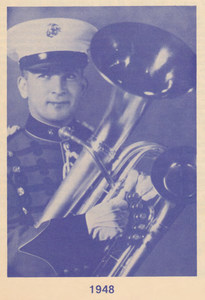
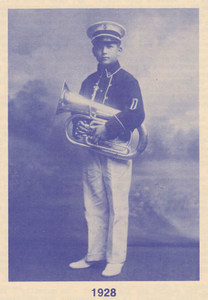
Art Lehman Euphonium Solos Vol. 1
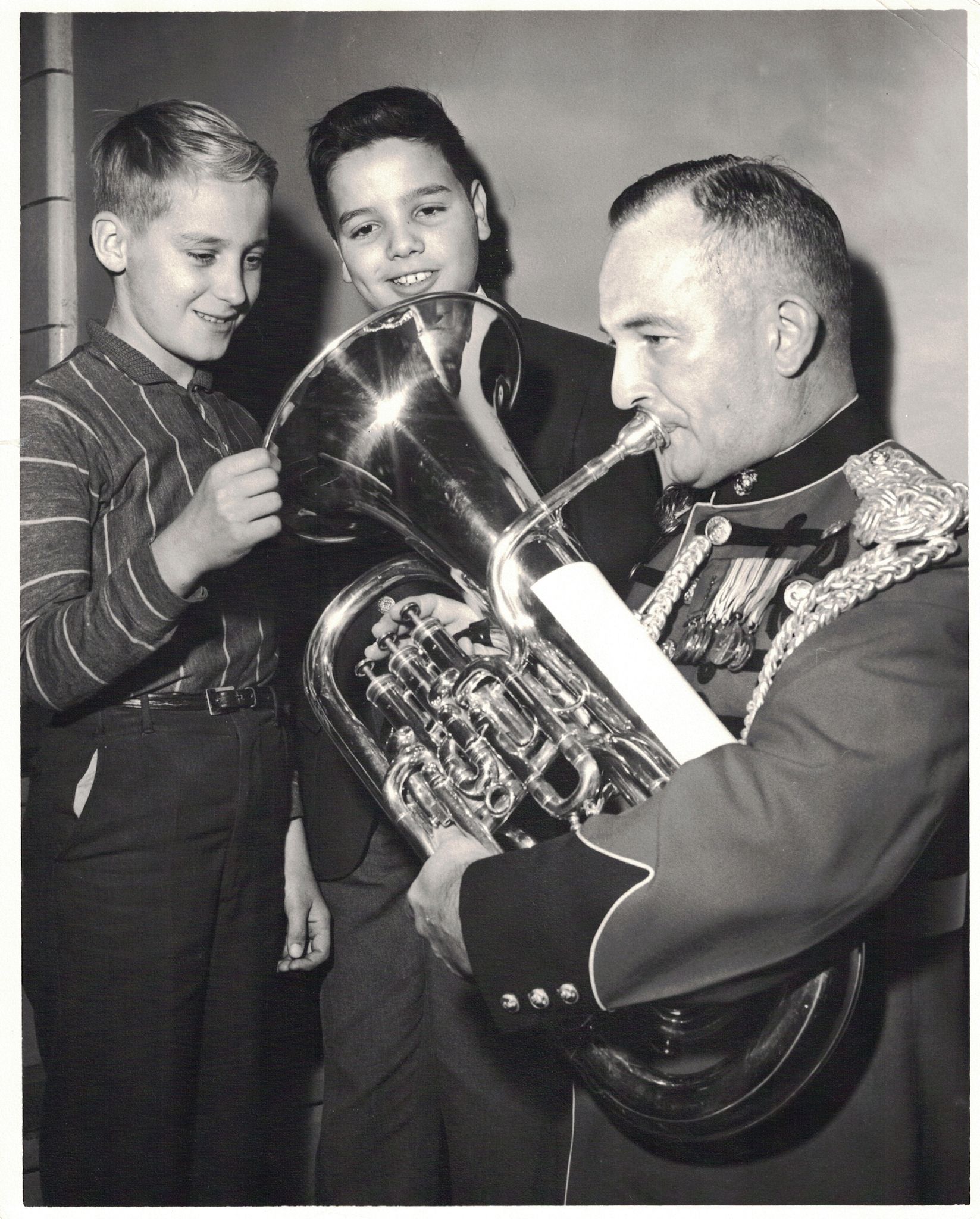
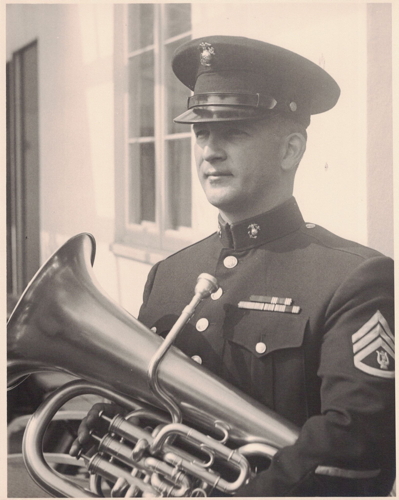
Eternal Father from Funeral of Arthur Lehman
